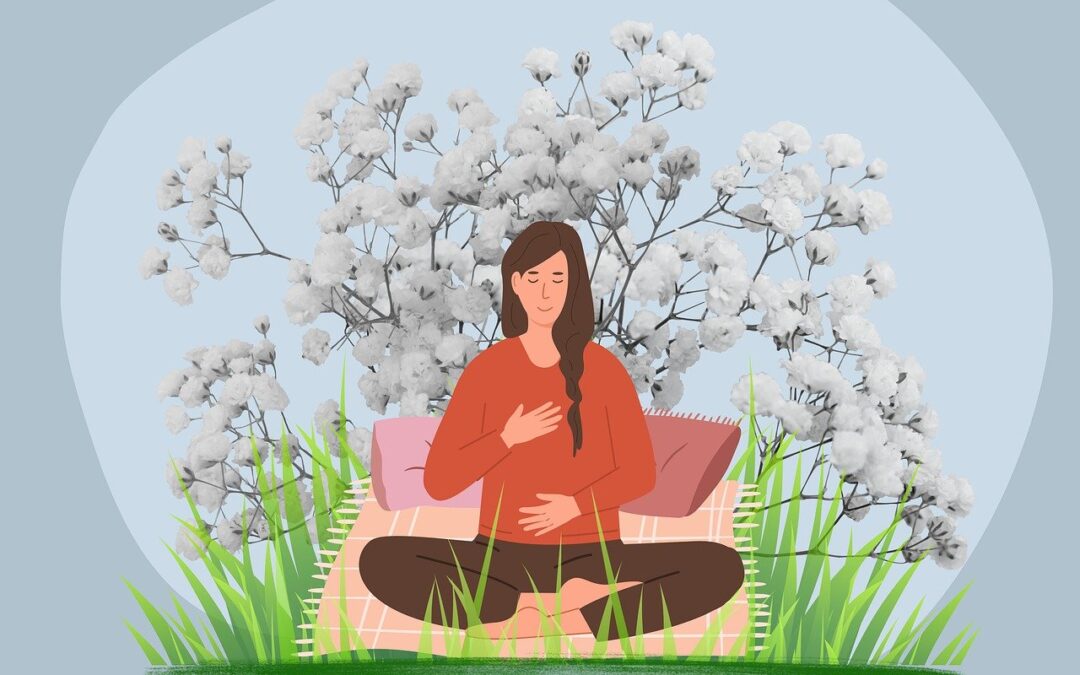Introduction
The human body is an amazing and complex organism. It can also be oddly simple. While each part contributes to the universal health of the whole, there are a few things that seem to have more influence than others. One such prominent player in the body is the vagus nerve. It is also called the “wandering nerve” due to its impressive distribution throughout the body. Due to its moving through so many important systems, a dysregulation of the nerve could look like many different things. However, the good news is that there are ways to manage, even heal, and/or prevent such disruptions and keep them from happening altogether. Mindful breathing techniques can help immensely in this.
What it is
The vagus nerve is a key component of the autonomic nervous system. Originating in the brainstem, it travels down through the neck and chest to the abdomen. The vagus nerve plays a crucial role in regulating various involuntary bodily functions, including heart rate, digestion, and respiration. Additionally, the vagus nerve is involved in the parasympathetic nervous system, promoting relaxation and calming responses in contrast to the sympathetic nervous system, which is associated with the “fight or flight” response.
Disruption
Disruption or dysfunction of the vagus nerve can lead to various health issues. Unfortunately, the symptoms can vary depending on the extent and location of the disruption. Some potential consequences of vagus nerve dysfunction include heart rate and blood pressure issues, digestive and gastrointestinal problems, respiratory distress, autonomic dysregulation, as well as emotional and mental health issues.
It’s important to note that vagus nerve dysfunction can have various causes, including injury, inflammation, or certain medical conditions. Because of this, treatment options depend on the underlying cause. Treatments and may include medications, lifestyle modifications, or surgical interventions in severe cases.

Mindful breathing
Mindful breathing practices, inspired by Eastern disciplines, place a strong emphasis on awareness and deep, intentional breaths. These techniques often involve slow, rhythmic breathing through the nose, thus allowing the diaphragm to fully expand with each inhale and contract with each exhale. The goal is to shift from shallow, chest-centric breathing to a more profound, belly-driven breath pattern.
Connecting with the Vagus Nerve
The vagus nerve is intimately connected to our breath. By engaging in deliberate, deep breathing, we stimulate the vagus nerve, triggering the relaxation response known as the “rest and digest” mode. This counteracts the “fight or flight” stress response, promoting a sense of calm and balance.

Mindful breathing acts as a bridge between the mind and body, consequently fostering a harmonious relationship between the two. The slow, deliberate breaths signal to the nervous system that it’s safe to relax, easing tension and reducing the physiological and psychological impacts of stress.
The Healing Power of Breath
As you incorporate mindful breathing into your routine, you may notice myriad benefits. Regular practice has been associated with lowered heart rate, reduced blood pressure, and improved digestion. Furthermore, the calming effect on the nervous system can alleviate symptoms of anxiety and depression.
Conclusion
In a world filled with constant stimuli, taking the time to reconnect with our breath through mindful practices can be a transformative journey. By nurturing the Vagus nerve, we pave the way for enhanced well-being, allowing the healing power of breath to guide us toward a more balanced and harmonious existence. Embrace the simplicity of mindful breathing, and let it be your gateway to a calmer, more centered life. Stella Luna has many options to help support and maintain the continued practice of well-being. Our Immersive services can provide an environmental break from constant stimulation. Additionally, our practitioner-led services can teach, support, and provide a place of practice for more active routines of self-care.

John has a Bachelors in Communication from Cleveland State University and has made a career in child and adolescent mental health, working in residential, community, and day treatment settings in a variety of roles. He has also spent over 24 years training in Chinese Internal Arts, most of that time he has also been instructing. On top of all this, John has a rich work history which includes retail, performance, fitness, and construction.

